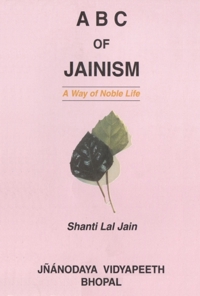LESSON 12
Jaina-Dhyāna And Sāmāyika
DhyānaIn Jainism, 'Dhyāna' means the concentration of mind on a particular object. When, the mind concentrates on moral object, it is 'Praśasta Dhyāna' and when the mind concentrates on immoral object, it is 'Apraśasta Dhyāna'.
Apraśasta-Dhyāna is of two types, namely, Ārta-Dhyāna and Raudra-Dhyāna. When we think about our loss or failure, we become sad. This is called 'Ārta-Dhyāna'. When we wish bad things for others, we harm ourselves as well. This is called Raudra-Dhyāna. Worldly life is full of sufferings on account of these two Apraśasta-Dhyānas. Praśasta-Dhyāna is the only way to relieve oneself from these sufferings.
Praśasta-Dhyāna is of two kinds, namely Dharma-Dhyāna and Śukla-Dhyāna. When we think of great souls, remember their virtues, and practice religious activities, we do Dharma-Dhyāna. After Dharma-Dhyāna Śukla-Dhyāna is practiced. In Śukla-Dhyāna, the Munīs meditate upon the self, after renouncing all other thoughts. In the present era, the Śukla-Dhyāna is not possible to be practiced, so the Dharma-Dhyāna is the only way to relieve oneself from Ārta and Raudra-Dhyānas.
Dharma-Dhyāna induces us to practice non-violence. To avoid physical violence of self, we should keep our bodies healthy by taking a balanced vegetarian diet. To avoid mental violence of self, we should have good thoughts and speak the truth. We should be nice to all. This way of living is helpful for Dharma-Dhyāna. So, we should adopt Dharma-Dhyāna as a way of life and not as a ritual.
Sāmāyika
In Jainism, Sāmāyika is a righteous meditation. Sāmāyika is a practice of equanimity. Sāmāyika is the quality of remaining calm and undisturbed. Sāmāyika is a practice of self awareness. Sāmāyika is a relationship of self with the rest of the universe. It implies evenness of mind and temper. It entails removal of delusion (Moha), attachment (Raga) and aversion (Dveṣa).
Sāmāyika consists of a combination of the study of scriptures, contemplation of the principles of religion and mental or vocal recitation of prayers (Japa) like Ṇamokāra-Mantra.
We should practice equanimity with cheerful state of mind, totally abstaining from the five sins namely violence, untruth, theft, sensual pleasures and attachment through our activities-physical as well as mental for a set time. The minimum time limit for practicing Sāmāyika is 48 minutes-three times a day.
 Shanti Lal Jain
Shanti Lal Jain


